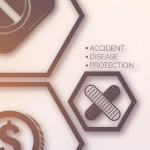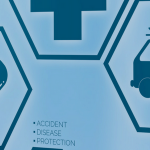CMS Proposed Expansion of ALS-2 to include Low-Tier O+ Whole Blood Transfusions Fails to Include Additional Funding for the Services
The Centers for Medicare & Medicaid Services (CMS) has released the Calendar Year (CY) 2025 proposed rule that proposes changes to the CY 2025 definitions of ALS-2 services to include one type of whole blood product. The rule does not propose any other changes to the Medicare ambulance fee schedule for 2025.
CMS proposes expanding the list ALS-2 to include low-tier O+ whole blood transfusions. However, there is no new money added to support the provision of the additional services. Specifically, CMS states that most transports involving whole blood are already reimbursed as ALS-2 and no additional payment will be added. For the few instances when whole blood is used and not in connection with another ALS-2 service, the transport would now be reimbursed under ALS-2. If a ground ambulance uses a blood product other than low-tier O+ whole blood, there would be no opportunity for reimbursement unless the transport qualified for ALS-2 through another service.
CMS states:
“We believe that many ground ambulance transports providing WBT already qualify for ALS2 payment, since patients requiring such transfusions are generally critically injured or ill and often suffering from cardio-respiratory failure and/or shock, and therefore are likely to receive one or more procedures currently listed as ALS procedures in the definition of ALS2, with endotracheal intubation, chest decompression, and/or placement of a central venous line or an intraosseous line the most probable to be seen in these circumstances. Patients requiring WBT are typically suffering from hemorrhagic shock, for which the usual course of treatment includes airway stabilization, control of the hemorrhagic source, and stabilization of blood pressure using crystalloid infusion and the provision of WBT or other blood product treatments when available, but not necessarily the administration of advanced cardiac life support medications. Consequently, we do not believe it is likely that most patients who may require WBT would trigger the other pathway to qualify as ALS2, the administration of at least three medications by intravenous push/bolus or by continuous infusion, excluding crystalloid, hypotonic, isotonic, and hypertonic solutions (Dextrose, Normal Saline, Ringer’s Lactate).”
“However, not all ground ambulance transports providing WBT may already qualify for ALS2 payment. An ambulance transport would not qualify for ALS2 payment where a patient received only WBT during a ground ambulance transport, and not one or more other services that, either by themselves or in combination, presently qualify as ALS2. We believe WBT should independently qualify as an ALS2 procedure because the administration of WBT and handling of low titer O+ whole blood require a complex level of care beyond ALS1 for which EMS providers and suppliers at the EMT-Intermediate or paramedic level require additional training. In addition, WBT requires specialized equipment such as a blood warmer and rapid infuser. While there is no established national training protocol, many systems follow the guidelines of the Association for the Advancement of Blood and Biotherapies (AABB), which requires additional training that is 4 hours in length for paramedics and 6 hours in length for EMS supervisory staff. Medicare’s requirements for ambulance staffing at 42 CFR 410.41(b) include compliance with state and local laws, which here would establish appropriate training requirements with respect to WBT administration.”
“Therefore, we believe it is appropriate to modify the definition of ALS2 to account for the instances where patients are administered WBT but do not otherwise qualify for ALS2 payment. Of note, we do not have the authority to provide an additional payment, such as an add-on payment for the administration of WBT under the AFS.”[1]
CMS proposes this changed based on data showing that about 1.2 percent of ground ambulance providers/suppliers use some time of blood product, with the majority (60 percent of those carrying the low-tier O+ whole blood). CMS does not discuss the ongoing discussions of the blood community and medical profession about the appropriateness of this treatment versus other types of whole blood or blood components. Nor does it discuss the cost of providing these services. Moreover, it does not address how this proposal may affect the current blood shortage in the United States.
The AAA is working with our members, other EMS organizations, and the blood community to assess the clinical aspects of this proposal, but has identified the failure to address the cost of providing blood and blood products to ground ambulance services that are already woefully underfunded.
The AAA will prepare a comment letter to submit before the September 9 deadline. We also plan to work with members who would also like to provide comments on the proposed rule.
[1]CMS. “CY 2025 Payment Policies under the Physician Fee Schedule and Other Changes to Part B Payment and Coverage Policies; Medicare Shared Savings Program Requirements; Medicare Prescription Drug Inflation Rebate Program; and Medicare Overpayments.” Display Copy pages 1165-66.











